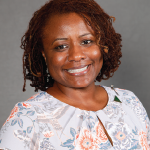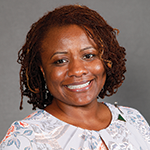This week, Hazel L. Breland, PhD, OTR/L, FAOTA, stepped into her new role as the 50th ARHP president.
Dr. Breland is an associate professor of occupational therapy (OT) at the Medical University of South Carolina in Charleston where she teaches masters students, serves as academic fieldwork coordinator for clinical placements of all entry-level graduate OT students and leads The Dr. Raymond S. Greenberg Presidential Scholars Program. She has been a member of the ARHP since 2004 and has served on the ARHP Executive Committee for the past three years as president elect (2018), member-at-large secretary (2017) and chair of the ARHP Annual Meeting Planning (AMPC) Subcommittee (2016, invited guest); she had served on the ARHP AMPC Subcommittee for the three previous years.
Bringing her unique practice and research perspectives on interprofessional collaboration and health disparities, Dr. Breland is excited to support the aims of the ARHP and put a spotlight on practice issues dear to her heart, including access to care for underserved communities. She recently spoke with ACR@Work to share her goals in this new role and discuss what drew her to OT and the ARHP presidency.
ACR@Work: What attracted you to occupational therapy, and what inspired your research related to health disparities, community involvement and interprofessional collaboration?
Dr. Breland: I learned about occupational therapy through my dad during a summer off from my undergraduate study when I took him to OT. He was working as a cement finisher to build a bridge, and his hand was crushed between concrete and steel. Being able to follow him through his therapy experience allowed me to fully appreciate the OT profession, which transformed his life by helping him regain function in his hand.
Relative to my research, health disparities are something I grew up seeing in the rural community where I was raised. I saw firsthand how determinants of health can impact a person’s life. Once I began my academic career in Charleston, just 50 miles from my home, I saw a significant gap in the advanced care I worked around compared with the often disparate care I witnessed in my home community. This drove me to study health disparity, because I felt I should be engaged in community issues, and I found that I could integrate my work in my profession, my family, my church and my community to make a difference. Being on a campus that promotes the understanding and the value of interprofessional collaboration was another perfect fit for me to tap into.


